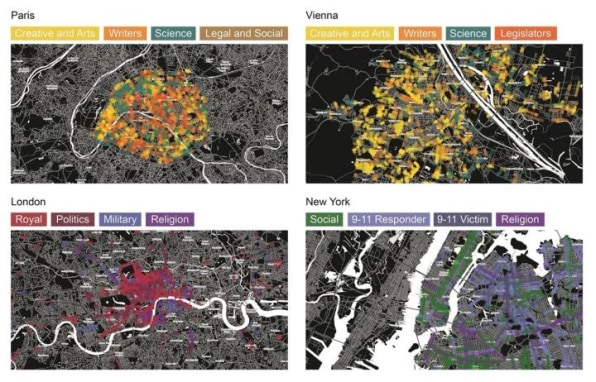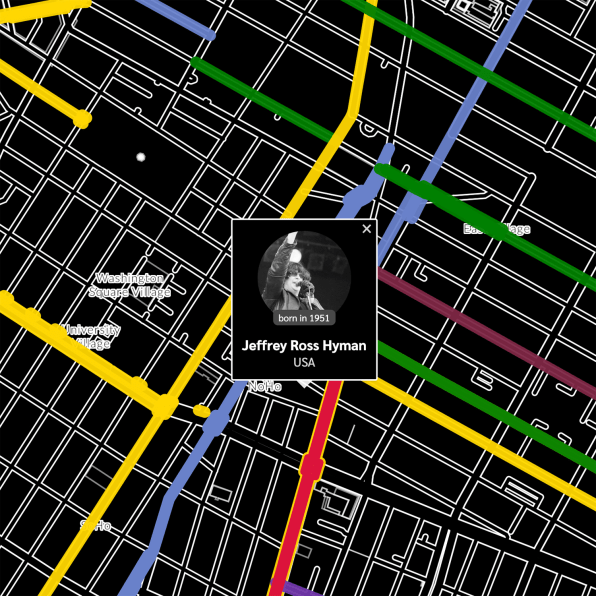If you live in a humming urban metropolis, you will know that cities are alive. They exist like a body in motion, governed by a brain that’s constantly evolving with the world around it. They have personalities, quirks, and values developed over decades—or even centuries—since birth. And they’re a constant presence in the lives of those who walk their streets, like hovering grandparents to the children of the city.
Because cities hold powerful sway over those who live there, parsing the cultural values entrenched in such places has become a scholarly focus. According to a recent report led by a professor at Washington University in St. Louis, “Quantifying a society’s value system is important because it suggests what people deeply care about—it reflects who they actually are and, more importantly, who they will like to be.”
Those researchers had a novel idea: to map values by studying street names, which were designated in honor of a city’s most celebrated people.
The team chose four places with an abundance of history, each of which shaped the Western world: Paris, Vienna, London, and New York. They used artificial intelligence to identify nearly 5,000 honorific streets across the cities, and then—in an analysis of what they dubbed “streetonomics”—they evaluated each city’s gender bias, the professions viewed as most elite, the most-lauded era in its history, and its openness to honoring foreigners.

Here’s what they found:
Paris:
Vienna:
London:
New York:

(77)